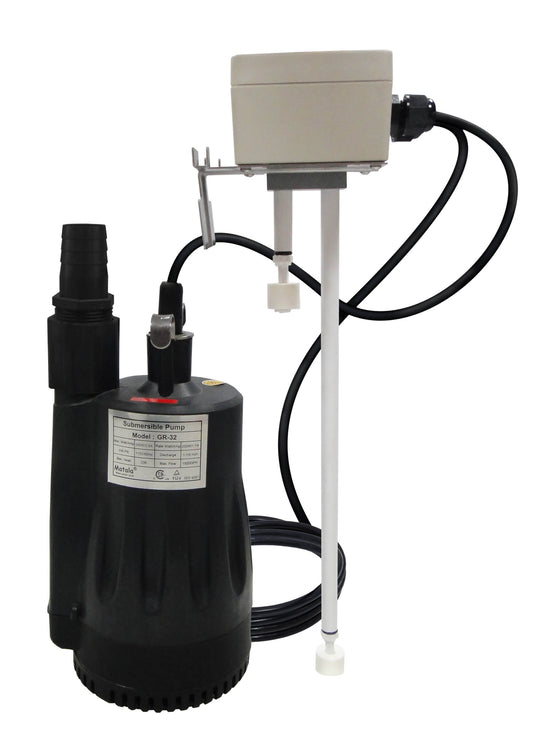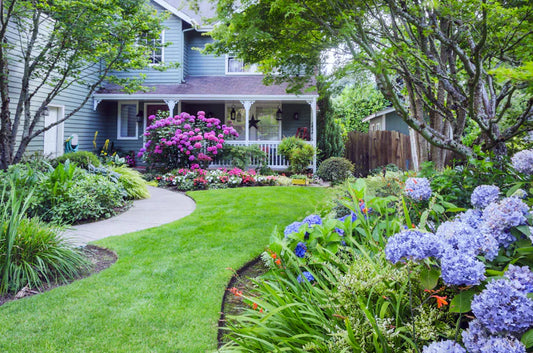
Biofilm Filtration: The Future of Greywater Reuse
Sam Wilhoit
Why Biofilm-Based Greywater Systems are the Future of Sustainable Irrigation
Summary: Greywater is the lightly used water from laundry, showers, and bathroom sinks. Sending it straight to the landscape — often called laundry-to-landscape (L2L) — can carry soaps, surfactants, and lint into your soil and drip lines. Biofilm-based filtration, used in Aqua2use systems, employs beneficial microbes to “digest” these residues first — protecting soil, plants, and irrigation hardware while saving thousands of gallons of potable water each year.[2]
What is greywater — and why treat it first?
Greywater looks harmless, but it still contains surfactants (the wetting agents in soaps and detergents), fine fibers, oils, and other residues. Surfactants reduce surface tension — helping soaps spread and lift grease from surfaces — but when they enter soil, they can coat particles, disrupt structure, and block air and water movement.[9] Over time, this raises soil salinity and pH, reduces infiltration, and lowers microbial diversity — especially with repeated irrigation from laundry or shower sources.[9][11]
Even when “biodegradable” detergents are used, research shows measurable declines in soil permeability, enzyme activity, and structure in certain soils.[8][9][11]
Bottom line: unfiltered greywater can slowly clog emitters, seal soil pores, and stress plants. Filtering first keeps the landscape healthy.[2][12]
Biofilm filtration — nature’s way of cleaning water
A biofilm is a thin, living layer of beneficial microbes that grows on surfaces with lots of texture and microcavities. In a biological greywater filter like Aqua2use, the open Matala® media provides massive surface area for these microbes to thrive. As greywater passes through, the biofilm consumes and breaks down soaps, oils, and dissolved organic matter, transforming the water chemistry before it reaches the soil.[7][2]
Think of it this way:
- The filter media catches lint and fine particles — mechanical filtration.
- The biofilm biologically breaks down what’s left — reducing organics and stabilizing the water.[7]
You’ve heard of “bad biofilms” (like slime in a drain). Those form in dark, oxygen-poor conditions. Inside the Aqua2use system, the biofilm is aerobic and controlled — supplied with fresh flow and oxygen — so it reduces odor, suppresses pathogens, & naturally purifies water.[2][7]

Quick explainer: BOD and COD — and why they matter
- BOD (Biochemical Oxygen Demand) measures how much oxygen microbes need to break down organic matter in water. High BOD means there’s a lot of material to decompose — fine inside a filter, but bad when dumped directly into soil, where it causes oxygen depletion and anaerobic conditions.[2]
- COD (Chemical Oxygen Demand) measures the total amount of oxidizable compounds — both organic and inorganic — that can react with oxygen. Think of it as a “total load” indicator: the higher the COD, the more polluted the water.[2]
Lower BOD and COD = cleaner, more oxygen-rich irrigation water. Aqua2use’s biofilm system routinely reduces both by 80–90%, protecting soil structure, plant roots, and irrigation emitters.[1][2][7]
Why “biodegradable soaps only” isn’t enough
Using biodegradable detergents helps, but it doesn’t remove salts, surfactants, or fine organics. Studies show that even mild soaps can:
- Increase pH and electrical conductivity (EC) in soil[9]
- Lower saturated hydraulic conductivity (Ksat) — meaning water soaks in more slowly[9]
- Reduce bacterial diversity and alter enzymatic activity, encouraging surface crusting in some soils[8][11]
Filtration first is what prevents those long-term issues. Even “biodegradable” residues can stress root zones when reused repeatedly.[2][12]
What makes Aqua2use different?

Progressive 4-stage filtration
Coarser layers capture lint and hair, finer layers provide contact time for biofilm growth. You get both mechanical filtration and biological treatment — with no chemicals required.[7]
Soil and plant protection
By lowering surfactant and organic loads before irrigation, Aqua2use helps preserve soil pore space, supports beneficial enzyme activity, and maintains permeability — keeping landscapes thriving and drip systems reliable.[11][2]
Heavy metals and trace pollutants
Biofilms can adsorb and transform trace metals such as zinc (Zn), copper (Cu), and nickel (Ni) — reducing their mobility and toxicity in soil.[3]

Real-world performance
Independent field studies show the following improvements from biofilm filtration compared to unfiltered laundry-to-landscape systems:[1][2]
| Metric | Untreated L2L (Typical) | Biofilm-Treated Greywater (Aqua2use) | Benefit |
|---|---|---|---|
| BOD (mg/L) | 150–250[2] | 28–45[1] | ~85% reduction, more oxygen-rich effluent |
| COD (mg/L) | 300–500[2] | 60–90[1] | 80% reduction, less organic load |
| pH | 8.5–9.5[9] | 7.2–7.6[1] | Neutralized water chemistry |
| EC (dS/m) | 1.2–1.8[9] | < 0.8[1] | Lower salinity and sodium stress |
| Surfactants (mg/L) | 3–6[2] | < 0.1[1] | > 95% removal, protects infiltration |
| Emitter Clogging | Frequent, every 1–2 years[12] | Rare, 3–5× longer line life[2] | Less maintenance |
| Soil Biology | Decline in microbial activity[9] | Enhanced aerobic activity[11] | Healthier soil microbiome |

Maintenance is simple
- Rinse Matala® filter panels every 4–6 months with a garden hose.
- Replace filter media every 3 years depending on use.
- No chemicals, no specialized tools — just periodic cleaning to maintain flow.
Where this leaves L2L (laundry-to-landscape)
Laundry-to-landscape systems are simple and inexpensive, but they push the problem downstream — letting residues, surfactants, and solids accumulate in soil and emitters.[12] Biofilm filtration moves the treatment upstream, producing water that’s oxygenated, balanced, and soil-safe before irrigation even begins.[2] That’s how landscapes stay healthy season after season.
Comparison: Aqua2use vs. L2L (No Filter)
| Feature / Metric | Basic Laundry-to-Landscape (No Filter) | Aqua2use Filtered Greywater System | Benefit |
|---|---|---|---|
| Filtration Process | No filtration — greywater flows directly to soil.[12] | Progressive 4-stage filtration with biofilm treatment removes lint, fibers, soap scum, and fine debris.[7] | Prevents clogging of emitters & soil sealing. |
| Water Quality (BOD/COD) | High — leads to soil anaerobiosis.[2] | Up to 80–90% reduction in BOD/COD.[1][2] | Cleaner, oxygen-rich irrigation water. |
| Biofilm Dynamics | Random anaerobic biofilm growth often causes odor and clogging.[2] | Controlled aerobic biofilm breaks down organics and stabilizes output.[7] | Stable, self-maintaining living filtration. |
| Flow Management | Passive gravity flow with no regulation. | Electronic Pump Controller (EPC) with dual magnetic floats for automated flow. | Even water distribution and stable soil moisture. |
| Soil & Root Health | Soap residues and lint block pores and disrupt microbial life.[9] | Enhances enzyme activity and beneficial bacteria.[11] | Strong plant development and long-term soil vitality. |
| Plant Compatibility | Limited to hardy or drought-tolerant species. | Safe for ornamentals, shrubs, fruit trees, and turf. | Expands irrigation potential. |
| Emitter & Line Longevity | High clogging rate, frequent flushing.[12] | Reliable flow with 3–5× longer emitter life.[2] | Reduces maintenance. |
| Odor & Pathogens | Stagnant water causes odor and bacterial buildup. | Aerobic biofilm suppresses pathogens naturally.[2] | Odor-free, hygienic irrigation. |
| System Longevity | Soil infiltration declines after 1–2 years. | Consistent performance for 10+ years (with maintenance best practices).[12] | Long-term reliability. |
| Water Savings | 15,000–20,000 gallons/year (laundry only). | Up to 40,000 gallons/year (full household). | Maximizes conservation and ROI. |
| Drought Resilience | Minimal benefit, unfiltered systems fail under stress. | Provides consistent irrigation in drought conditions.[12] | Keeps gardens thriving. |
| Installation | Simple DIY setups, often not code-compliant. | Professionally engineered, WaterMark-approved system. | Meets building standards, plug-n-play ready. |
 FAQ
FAQ
Is kitchen sink or dishwasher water allowed in a greywater system?
No. Greywater systems like Aqua2use are for laundry, showers, and bathroom sinks only. Kitchen and dishwasher water contain fats, oils, food particles, and higher pathogen loads — they must go to sewer or septic per most codes.
How often should Aqua2use filters be cleaned or replaced?
Rinse the Matala filter media every 4–6 months. Replace it about every 3 years depending on use.
Does Aqua2use meet code for greywater reuse?
Yes. Aqua2use is designed for subsurface irrigation with overflow to sewer or septic, aligning with most U.S. state and local codes.
Should I choose a pump model or a gravity model?
Use the pump model when you need to pressurize lines, serve multiple zones, or overcome elevation. Use the gravity model when you have continuous fall and want a no-power setup.
What soaps and detergents are greywater-safe?
Choose biodegradable or biocompatible products, and avoid chlorine bleach, boron/borate/borax, and sodium-based detergents.
What can I irrigate with treated greywater?
Subsurface irrigation is suitable for ornamentals, shrubs, turf, fruit trees, and many edibles when delivered below the surface. Avoid spray irrigation or ponding.
How does biofilm help with metals and organics?
Biofilm adsorbs trace metals (Zn, Cu, Ni) and metabolizes organic residues, lowering toxicity and improving long-term irrigation safety.[3]
Sources
- Field Study: Aqua2use GWDD Test — Caravan Park, QLD Australia↑
- Greywater Treatment and Reuse in Irrigation: Review and Implications↑
- Removal of Heavy Metal Ions from Wastewater↑
- Comparison of Household Greywater Sources and Rainwater Quality↑
- Greywater Footprints and the Sustainability of Cities↑
- Greywater Trends in India: Management and Sustainability Perspectives↑
- Biological Treatment of Greywater: Sustainable Solutions↑
- The Effect of Powder Detergent Water on Shrinkage and Soil Quality↑
- Effect of Detergents from Laundry Greywater on Soil Properties↑
- A Narrative Review on the Potential Reuse of Greywater↑
- Domestic Greywater Irrigation: Effects on Soil Properties and Enzymatic Activities↑
- Sustainable Water Management: Greywater Reuse and Soil Health↑









